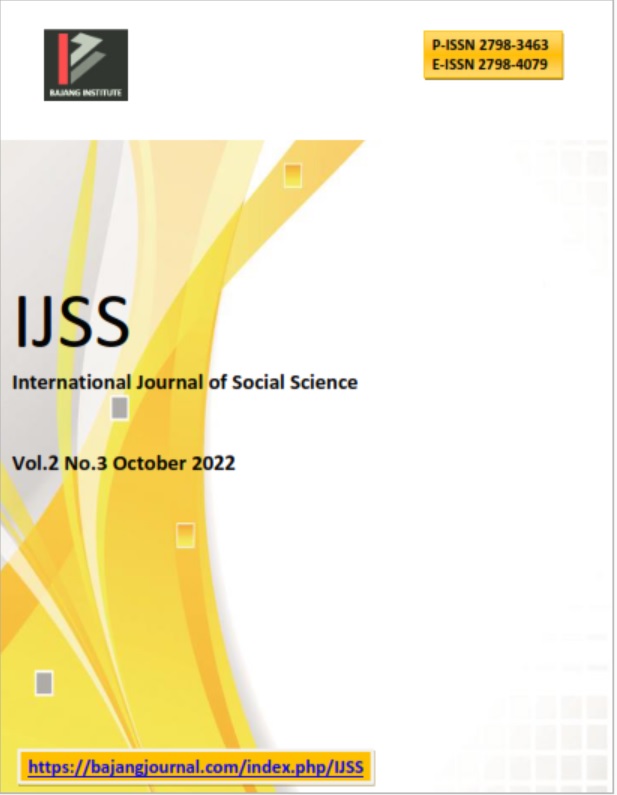EMPOWERMENT OF THE GAUM COMMUNITY THROUGH ECOLOGY-BASED INTERIOR DESIGN SKILLS TRAINING TO SUPPORT THE INDEPENDENCE OF CULINARY TRADERS IN THE GAUM GARDEN KARANGANYAR MARKET
DOI:
https://doi.org/10.53625/ijss.v2i3.3642Keywords:
Empowerment, Ecology, Potential, Creative.Abstract
Gaum Garden Market consists of several outlets with 36 owners, managed by a Village Owned Enterprise Pratama Village Gaum Tasikmadu Karangnyar, now turned into Omah Jowo as a culinary place. As a means of culinary places, it is necessary to design innovations so that interior design can be an attraction for tourist destinations. Need a helping hand from the main universities that have Interior Design Study Programs to participate in providing understanding and interior design skills. Therefore, it is important for community empowerment activities in Omah Jowo. The chosen strategy is ecological-based empowerment , using the Rapid Rural Appraisal (RRA) method. In this method, participants are invited to learn to understand the potential and awareness about maintaining environmental safety in the concept of Hamemayu Hayuning Bawana, able to build motivation in EkoDesign creativity. The Participatory Rural Appraisal (PRA) method emphasizes the involvement of participants in being able to foster creativity related to the potential of traders, building interior design creativity skills, mainly related to image. The results of the empowerment training consist of (1) participants' skills in analyzing design needs for culinary businesses; (2) The results of the creativity of a natural friendly gasebo design, an environmentally friendly dining area and children's design, a pendapa design as an environmentally friendly gallery image. Empowerment activities can be utilized: (1) Recommendations for Omah Jowo's design offer, which is currently still in the process of updating the design; (1) Provision of skills and knowledge of participants in developing a culinary business independently.
References
Irawan, Wendi. 2010. Community Empowerment Methods. https://www.scribd.com/doc/76408558/Metode-Pemberdayaan-Masyarakat. Accessed, June 3, 2021 at 10.30.
Felik T Adi Santosa, et al. 2013. Restaurant Interior Design With Ecological Approach In Surabaya. Intra Journal, Vol 1, 1-8.
Manik, 2018. Environmental Management. Djambatan: Jakarta https://www.kompas.com/skola/read/2021/04/16/163119269/Ekologi-defenisi-ruangku-asas-dan benefits. Downloaded June 2, 2021 at 05.00.
Understanding Community Empowerment in http://www.dosen Pendidikan co.id/community-empowerment. Downloaded June 2, 2021 at 05.30.
Karanganyar Regional Regulation No. 7 of 2008, concerning the Development of Nature-Based Tourism Areas.
Setem, I Wayan, Pande Made Sekerta, Sardono W Kusuma, Dwi Maryanto. 2008.” Boars Engage in Exploitative Sand Mining Metaphor.” Mudra Journal of Cultural Arts 33 (2) 161. https://doi.org/10.3109/mudra.v33i2.350.
Karangnyar Regent Regulation No. 13 of 2018 concerning Guidelines for Determination of
Master Plan Tourism Villages for 2016-2026 No. 6 of 2016 concerning Tourism Development of Karanganyar Regency.
Sunarmi. 2020. “Mayu Hayuning Bawana Nusantara Interior Pilars” Psychosocial International Journal of Psychosocial Rehabilitation. ISSN: 1475-7192, Vol 24-Issue 5, DOI: 10.37200/IJPR/V2415/PR20176, Page 389-398 https://www.psychosocial.com/article/PR201705/16299/
Widada, Sahid Teguh, et al.2019. Conservation of the Natural and Social Environment (Critical Reflection on Fiber Centini). Surakarta: LPPM UNS Surakarta

















